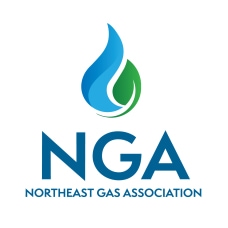PSMS Lessons Learned - Verbal and Non-Verbal Communication - October 2024
PSMS Lessons Learned – October 2024
Effective Verbal and Non-Verbal Communication Fosters a “Culture of Safety”
Verbal and non-verbal communication are essential for preventing incidents at work sites. Effective verbal communication ensures that procedures and work instructions, including all safety protocols, are articulated among the crew members -- including explaining the “why.”
Non-verbal communication, such as body language and visual signals, plays a significant role in conveying urgency or caution. For instance, a crew team members worker's gesture can indicate alertness or potential hazards.
Together, these two forms of communication enhance teamwork, facilitate quick responses to safety issues, and help create an environment where all workers feel empowered to speak up about concerns and stop work if necessary. This can help significantly lower risks and improve overall worksite safety.
Description of Event:
While installing a new 1-inch plastic service, the crew exposed the associated 4” gas main by hand-digging. The spotter stepped away to grab a rag to wipe his brow due to the warm weather and did not notify the backhoe operator. The operator continued to clear the excavation bank that partially caved-in without visibility of the main and damaged a 4-inch plastic main while digging with mechanized equipment. An immediate safety stop was called. The crew moved 10 feet south and began excavating a remote opening to perform a squeeze-off. The depth of the main became shallower (from 42” to 24” depth) in the shift to the remote opening, due to its horizontal directional drill (HDD) installation in 2017. Locating equipment did not accurately indicate the depth of the main, and a second damage occurred despite the crew digging cautiously.
Root Cause(s) and Contributing Factor(s):
- Primary Causal Factor – Lack of communication between operator and spotter contributed to the operator continuing to excavate without visibility of the gas main.
- Root Cause: Excavation procedures were not followed throughout the course of work.
- Secondary Causal Factor – Due to the horizontal directional drill (HDD) installation of the 4-inch PE main, the main depth was 18-inches different from the service location, contributing to the crew damaging the main during the emergency excavation.
- Root Cause: Human Engineering: Human – Machine Interface, tools/instruments.
Key Corrective Actions:
- The incident was reviewed with all personnel during tailboard talks. Incident review highlighted the importance of consistent communication (both verbal and non-verbal) between equipment operators and spotters. In addition, Supervisors reviewed use of non-verbal communication techniques including “hand signals” contained in the Safety Handbook.
- Opportunities were explored to acquire more efficient and effective locating equipment.
- Event lessons learned were shared with operating staff, engineering, training, and safety.
Key Lessons Learned:
Following Damage Prevention policies and all jurisdictional codes & standards during excavation activities is critical to avoid unintended consequences. Momentary disruption of safety protocols can lead to significant safety consequences. During excavation activities, if the designated spotter needs to step away, make eye and use hand signals to contact and effectively communicate so the machine operator is aware. When operator visibility is compromised, STOP operating equipment until a spotter can be utilized. Momentary lapses in work site communications and procedure conformance can lead to significant safety risks. These “what if” situations should be discussed in pre-job briefs.

